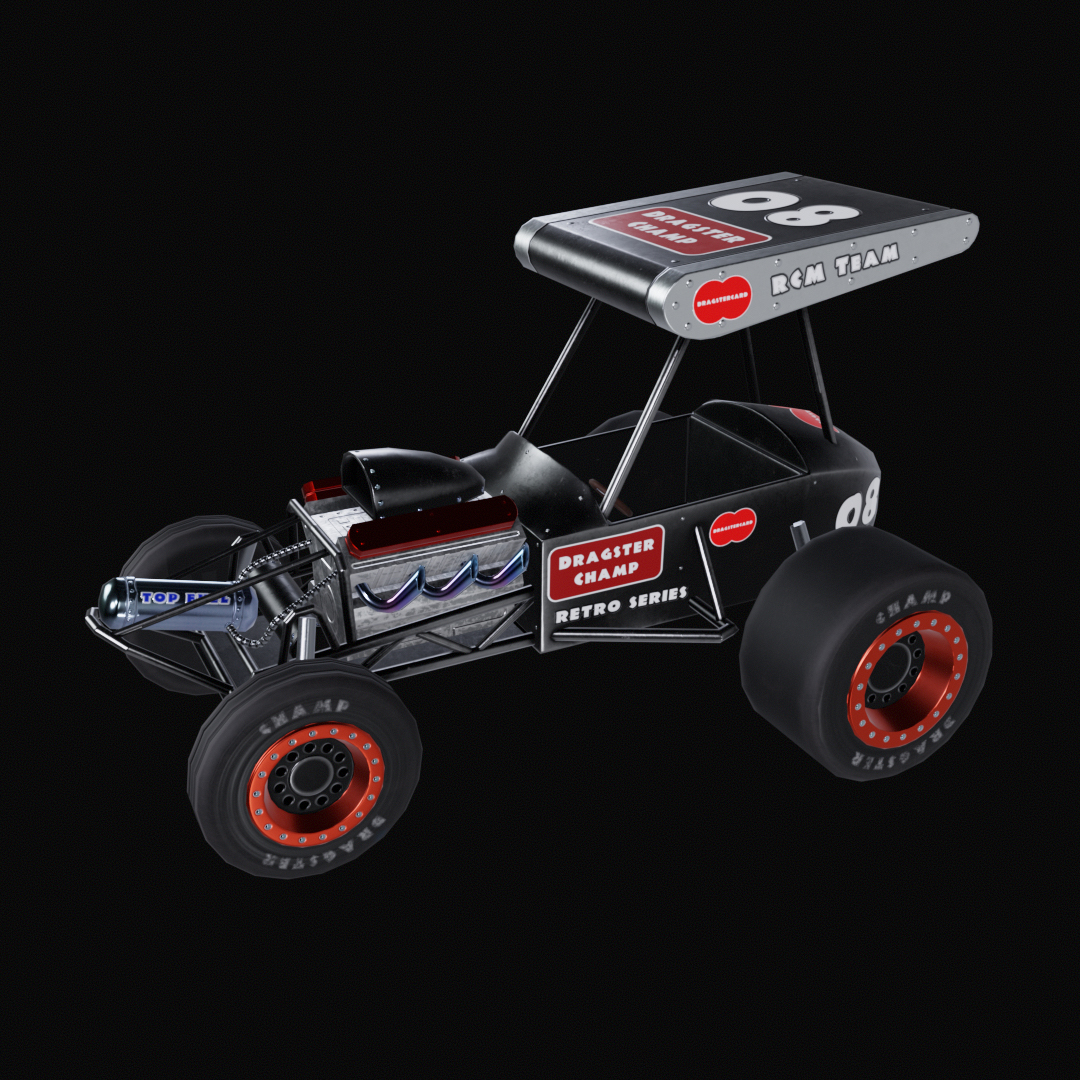Success in racing games depends on more than visually appealing cars or dynamic tracks. Developers and businesses must create experiences that consistently engage players while aligning with market expectations. A focused approach ensures the game meets audience demands for realism, performance, and long-term replay value.
A clear strategy starts with full-cycle game development, which covers everything from the initial concept to the final deployment. Companies prioritizing this approach benefit from greater control over design, mechanics, and monetization systems. Delivering smooth controls, stunning visuals, and realistic physics becomes possible when the development pipeline is aligned with the end goals.
Analyzing market trends also plays a key role. Racing games require features that stand out — whether through immersive multiplayer modes, customizable vehicles, or live updates that retain player interest. A thorough understanding of audience preferences combined with effective production workflows sets the foundation for a successful title.
Ultimately, building a racing game that balances entertainment and profitability comes down to detailed execution. Every stage matters to meet business targets and player expectations, from concept to live operations.
The Origins and Evolution of Racing Games
Racing games have grown significantly since their inception, evolving to match technological advances and shifting player preferences. Early titles were simple, pixelated experiences defining virtual car competitions' foundation. Mobile arcade games first brought fast-paced entertainment to handheld devices, attracting casual players with their accessible gameplay and minimal technical requirements.
The 1980s introduced notable arcade racing hits like Pole Position, which pioneered realistic tracks and steering mechanics. Over time, developers expanded the genre, adding more complex systems such as dynamic environments, vehicle upgrades, and multiplayer features. Consoles like the PlayStation further transformed racing games in the 1990s by enabling improved graphics, 3D perspectives, and immersive soundtracks. Titles like Gran Turismo and Need for Speed became benchmarks for realism and gameplay variety.
Modern racing games now offer highly detailed simulations, expansive open worlds, and online competitive experiences. Mobile racing games remain a popular choice, featuring touch controls and bite-sized challenges ideal for on-the-go play. By balancing realism with accessibility, racing games have become a staple in the industry, serving both casual and dedicated players.
Understanding the Audience for Racing Games
Success in racing games requires a deep understanding of the player base. Audience expectations vary; some prioritize realism and precision, while others seek casual fun or multiplayer excitement. Younger audiences often favor mobile arcade games, drawn to quick sessions and competitive leaderboards.
Players interested in more immersive gameplay typically turn to console or PC platforms, where advanced physics, detailed environments, and customization options are available. Recognizing the specific needs of each group ensures that racing games resonate and retain their target audience.
Key Demographics for Car Racing Game Players
The appeal of car racing games spans multiple player demographics, influenced by age, platform preference, and gaming habits. Enthusiasts within the world of video game genres include both casual and competitive players seeking unique experiences.
- Younger players gravitate toward arcade-style mobile games due to their accessibility and short play sessions. Fast loading times, intuitive controls, and competitive elements like leaderboards attract this group. For developers, monetization opportunities through ads or in-app purchases also align well with this audience’s preferences.
- Older players often prefer detailed simulations on consoles or PCs. These users value realism, sophisticated vehicle mechanics, and the ability to customize cars or tracks. They are more likely to engage with single-player modes, immersive graphics, and expansive content updates.
- Competitive gamers represent another key group, focusing on multiplayer racing. Online tournaments, leaderboards, and ranked matchmaking appeal to their desire for recognition and skill-based challenges. Platforms supporting stable online connections and crossplay further broaden engagement opportunities.
Recognizing how these demographics interact with the genre helps tailor experiences that meet specific demands and ensure long-term player retention.
Market Trends Shaping Online Racing Games
Online racing games continue to evolve as technology and player expectations reshape the industry. Increased demand for multiplayer competition has driven developers to integrate advanced matchmaking systems and cross-platform capabilities. Competitive modes and leaderboards now appeal to casual and hardcore players, fostering sustained engagement.
The online racing games market is experiencing significant growth, influenced by several key trends:
- Rising mobile gaming adoption. The number of smartphone users worldwide surpassed 6 billion in 2021 and is expected to continue growing, providing a larger audience for mobile racing games.
- Expansion of esports and competitive gaming. The popularity of esports has led to increased interest in racing games, with more players participating in online competitions and tournaments.
- Advancements in technology. Improvements in graphics, processing power, and internet connectivity have enhanced the gaming experience, making online racing games more immersive and accessible.
- Shift towards free-to-play models with in-app purchases. Many developers are adopting free-to-play models, generating revenue through in-app purchases and advertisements, which attract a broader player base.
These trends are shaping the future of online racing games, offering new opportunities for developers and players alike. Mobile platforms remain influential, providing accessible online racing experiences for a wider audience. Improvements in mobile hardware now enable console-like graphics and smoother multiplayer connectivity. Free-to-play models with in-app purchases allow developers to monetize effectively without alienating users.
Emerging technologies like VR and AR are starting to shape immersive experiences for players seeking deeper engagement. As online racing games advance, developers must adapt to trends that prioritize accessibility, competition, and regular updates to meet shifting player demands.
Designing Core Mechanics that Captivate Players in Racing Games
Successful racing games rely on core mechanics that deliver excitement and replayability. Arcade game development often emphasizes quick, engaging experiences with accessible controls, while simulations focus on realism and precision.
Customizable vehicles, responsive physics, and diverse tracks provide the foundation for gameplay variety. Whether targeting casual audiences or competitive players, well-balanced mechanics ensure consistent engagement throughout each race.
Elements of Engaging Gameplay in a Car Racing Game



Creating engaging gameplay in a car racing game requires a combination of features that keep players excited, challenged, and invested. The right mix of track design, vehicle customization, and competitive opportunities ensures a dynamic experience for every type of player. By focusing on these core elements, developers can deliver gameplay that feels rewarding, balanced, and worth revisiting.
- Well-designed tracks. Varied environments with sharp turns, straightaways, and interactive obstacles keep the pacing fresh and challenge players at every level.
- Customizable vehicles. Players can personalize their cars with visual upgrades and performance modifications, enhancing immersion and encouraging long-term engagement.
- Progression systems. Unlocking new features through gameplay rewards adds a sense of achievement and keeps players invested in advancing their skills.
- Competitive modes. Online tournaments, time trials, and ranked matches appeal to players looking for skill-based challenges, while leaderboards and rewards amplify competition.
- Balanced AI opponents. AI that adapts to player skill ensures single-player modes remain challenging and rewarding without causing frustration.
The cohesiveness of these components is what makes for exciting and unforgettable gaming. Combining diverse track designs, personalization options, and competitive opportunities ensures racing games appeal to a wide audience. Developers who prioritize these aspects provide players with experiences that feel exciting, balanced, and worth returning to over time.
Importance of Intuitive Controls and Seamless Player Experience
Controls significantly impact how players perceive racing games. Intuitive handling ensures players feel connected to the car, whether through a simple arcade experience or a precision-focused simulator. Controls must respond instantly to player input, allowing seamless acceleration, braking, and steering without delays.
On mobile platforms, touch-based controls need simplicity and customization options. Players benefit from features like adjustable button layouts or tilt-based steering, improving usability. On consoles and PCs, support for controllers, keyboards, or steering wheels enhances accessibility and immersion.
Seamless player experience extends beyond controls. Fast load times, polished interfaces, and smooth performance reduce barriers to enjoyment. Stable online connections and minimal latency are vital in delivering uninterrupted multiplayer gameplay.
Simplifying controls while maintaining depth ensures players of all skill levels enjoy the game. Intuitive mechanics, paired with a seamless experience, lead to long-term engagement and stronger player satisfaction.
Let our pros develop a successful racing game for you.
Creating Immersive and Visually Stunning Environments for Racing Games

Visually striking environments are essential for creating immersive racing experiences. Well-designed tracks, dynamic lighting, and realistic weather effects contribute to player engagement. Detailed surroundings like cities, mountains, or deserts enhance immersion while maintaining performance across platforms.
High-quality visuals must align with gameplay flow, ensuring players enjoy smooth experiences without distractions. By combining artistry with performance optimization, developers deliver stunning visuals that captivate players while meeting technical standards.
How Visuals Enhance Car Racing Game Realism
Realistic visuals are crucial for immersing players in car racing games. High-quality graphics, including detailed car models, track surfaces, and environmental elements, set the stage for an engaging experience. Attention to fine details like tire marks, reflections, and dynamic lighting boosts visual realism while connecting players to the in-game environment.
Environments play a central role in enhancing realism. Dynamic weather systems with rain, fog, or snow force players to adapt, making races more challenging and immersive. Day-night cycles elevate engagement by offering varied visuals and influencing track conditions during gameplay.
Smooth animations also improve realism. Realistic vehicle movement, including suspension reactions, acceleration, and collisions, helps players feel the car’s weight and mechanics. Combining these elements ensures a natural driving experience.
Developers who balance stunning visuals with gameplay optimization retain performance without sacrificing realism. Visual realism makes racing games more immersive when executed well, ensuring players remain invested in the action.
Technical Optimization for Online Racing Games
Technical optimization is key to ensuring smooth and responsive gameplay, especially in online racing games. Developers working on Unity mobile game development focus on balancing performance and visuals to deliver consistent experiences across devices.
- Optimized assets. Reducing texture sizes, polygon counts, and unnecessary details ensures faster loading and stable performance without compromising quality.
- Efficient lighting systems. Dynamic lighting and shadows must be optimized for real-time rendering to minimize strain on hardware while maintaining visual appeal.
- Network optimization. Stable multiplayer experiences depend on reducing latency and packet loss. Implementing efficient netcode and predictive algorithms ensures seamless online matches.
- Frame rate consistency. Racing games require high, stable frame rates to provide smooth vehicle movement and responsive controls. Developers achieve this through dynamic resolution scaling and optimized shaders.
- Memory management. Efficient memory usage prevents crashes or stutters on mobile devices. Streamlining asset loading and removing redundant processes enhances performance.
A well-optimized game ensures players enjoy stunning visuals and fluid gameplay without interruptions. Unity’s capabilities provide developers with tools to manage technical challenges, resulting in racing games that perform seamlessly across platforms. By focusing on both optimization and visual fidelity, developers create experiences that meet the demands of competitive and casual players.
Monetization Strategies that Drive Profitability
Effective monetization strategies maximize profitability while maintaining a positive player experience. Developers exploring how to make a game demo can test engagement and gather feedback before implementing revenue models. Options like in-game purchases, ads, and premium upgrades allow flexibility in generating income. Developers create revenue opportunities that support long-term success by aligning monetization with player expectations.
Effective Revenue Models for Racing Games
Choosing the right revenue model ensures profitability while engaging the target audience. Racing games often rely on a mix of strategies to optimize income and appeal to players.
- Free-to-play with in-game purchases. Players can access the game for free while buying cosmetic upgrades, vehicle customization options, or performance boosts. This model works well for mobile platforms and casual audiences.
- Premium game sales. Selling the game at a fixed price remains effective for high-quality racing simulators targeting dedicated players on consoles and PCs.
- Battle passes and seasonal content. Offering exclusive rewards and challenges encourages players to stay engaged. Regularly updated content drives consistent revenue while retaining player interest.
- In-game advertisements. Integrating ads during non-intrusive moments, such as between races, can generate income without disrupting gameplay. Rewarded ads, where players earn in-game benefits for watching, enhance engagement.
- Subscription services. Offering access to premium features, exclusive vehicles, or expanded content through subscriptions creates predictable, long-term revenue.
Combining multiple models based on audience preferences ensures sustainable monetization. Developers must align revenue strategies with player habits to maximize profitability without risking dissatisfaction.
Balancing Monetization with Player Satisfaction
Monetization can impact player satisfaction, so maintaining balance is essential for long-term success. While monetization drives profitability, overly aggressive strategies can alienate players and damage retention. Understanding game development stages ensures monetization aligns with user experience from early production.
- Avoid pay-to-win mechanics. Offering upgrades or boosts that create unfair advantages frustrates players and reduces satisfaction. Focusing on cosmetic or non-competitive items preserves game fairness.
- Implement rewarding purchases. Players respond positively to meaningful purchases, such as unique vehicles, skins, or customization options. Offering value ensures players feel their investment is worthwhile.
- Offer optional ads. Rewarded advertisements provide benefits, such as extra currency or items, without interrupting gameplay. This approach increases engagement while supporting monetization.
- Test with a game demo. Developing a demo allows developers to gauge player reception to monetization strategies before full release. Testing ensures that pricing and offerings align with expectations.
Player satisfaction and monetization success go hand in hand. By creating fair, value-driven systems, developers build trust while maximizing revenue opportunities. Thoughtful integration of monetization ensures racing games remain engaging and profitable over the long term.
Marketing Strategies for Long-Term Success with Racing Games
For racing games to succeed in the long run, their marketing should focus on storytelling, community building, and regular updates. Game designers may hook players and keep them hooked by using one-of-a-kind features and dynamic environments. Marketers should focus on player involvement, updates, and engrossing gameplay to keep racing games popular over time.
Storytelling as a Tool to Market Car Racing Games
Storytelling enhances the appeal of racing games by creating emotional connections with players. A strong narrative builds immersion, encouraging players to invest in the game beyond mechanics and visuals. Stories can range from individual player progression to world-building that adds context to races, vehicles, or tracks.
For RC Mayhem, our racing game prototype, indirect storytelling focused on nostalgia and fast-paced fun. Inspired by early 2000s casual games, the game captures chaos and excitement through its abandoned mall setting. Players experience action-packed races while controlling RC cars with unique abilities, navigating inventive tracks full of obstacles. The story behind the prototype resonated with audiences seeking accessible, nostalgic gameplay paired with modern design.
Developers can integrate storytelling through character-driven modes, themed environments, or progression-based campaigns. Marketing campaigns that highlight these elements — along with visual trailers and engaging content—help games stand out in a competitive market. By blending storytelling with gameplay features, racing games appeal to both new players and long-time fans, creating a lasting impact.
Player Retention Through Community Engagement
Community engagement is essential for retaining players and driving long-term success. Active communities transform games into shared experiences, encouraging players to remain invested and return frequently.
- Interactive events and challenges. Hosting time-limited events, tournaments, or competitions keeps the community active. Features like leaderboards and rewards encourage players to participate and improve their skills.
- Consistent updates. Regular content updates, such as new tracks, vehicles, or power-ups, demonstrate developer commitment to player satisfaction. Updated features sustain interest while addressing player feedback.
- Cross-platform connectivity. Ensuring seamless play across PC, consoles, and mobile platforms allows players to compete with friends, building a sense of connection and loyalty.
Supporting active communities through forums, social media, and in-game features strengthens retention. Developers who engage directly with players, address feedback and maintain fresh content create loyal, long-term audiences. Racing games thrive when players feel heard, challenged, and connected to the larger community.
Build a Sustainable Future for Racing Games with Game-Ace
As a custom game development company, Game-Ace delivers racing games that meet business objectives and player demands. From concept to release, we provide tailored solutions to ensure engaging gameplay, optimized performance, and effective monetization.
Contact us to turn your ideas into dynamic, profitable racing games that meet player expectations and business goals. Partner with Game-Ace to build experiences that stand out in a competitive market and ensure long-term growth.
 Key Trends Shaping Gamification in Recruitment for 2026 and Beyond
Key Trends Shaping Gamification in Recruitment for 2026 and Beyond  How to Create Crypto Casino Games the Right Way
How to Create Crypto Casino Games the Right Way  AI Recruitment Games: From Real-Time Assessments to Better Hiring Outcomes
AI Recruitment Games: From Real-Time Assessments to Better Hiring Outcomes  Games for Business: Proven Strategies for Engagement and Growth
Games for Business: Proven Strategies for Engagement and Growth  How to Design Learning Games for Kids That Teach Real-World Skills
How to Design Learning Games for Kids That Teach Real-World Skills 


































